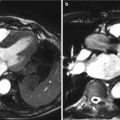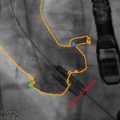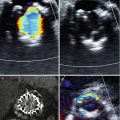James K. Min, Daniel S. Berman and Jonathon Leipsic (eds.)Multimodality Imaging for Transcatheter Aortic Valve Replacement201410.1007/978-1-4471-2798-7_1
© Springer-Verlag London 2014
1. Why We Need This Book
(1)
Weill Cornell Medical College, NewYork-Presbyterian Hospital, New York, NY, USA
(2)
Departments of Imaging and Medicine, Cedars-Sinai Medical Center, Cedars-Sinai Heart Institute David Geffen UCLA School of Medicine, Los Angeles, CA, USA
(3)
Division of Cardiology, Department of Radiology, University of British Columbia, St. Paul’s Hospital, Vancouver, BC, Canada
Abstract
Over the last decade, remarkable innovations in transcatheter technologies have led to the rapid development of an array of minimally invasive therapies that have challenged conventional treatment paradigms. Amongst these, none is as remarkable or as potentially disruptive as transcatheter aortic valve replacement (TAVR). An archetype of “bench-to-bedside” medicine, the origins of TAVR spanned the expertise of visionary clinicians to engineers to researchers to imagers. The theme underpinning the foundation of TAVR—that of a multidisciplinary approach to its development—persists in its application. From the landmark effort of Cribier who, in 2002, reported the first successful implantation of a transcatheter aortic valve, we have consistently witnessed a team approach to the execution of this complex procedure—bringing together a diverse group of experts to optimize patient outcomes. It is perhaps, in large part, due to this that we have observed an unprecedented growth in the scientific evidence, iterative technological advances, and utilization of TAVR that has surpassed even the most optimistic of observers.
Stay updated, free articles. Join our Telegram channel

Full access? Get Clinical Tree








